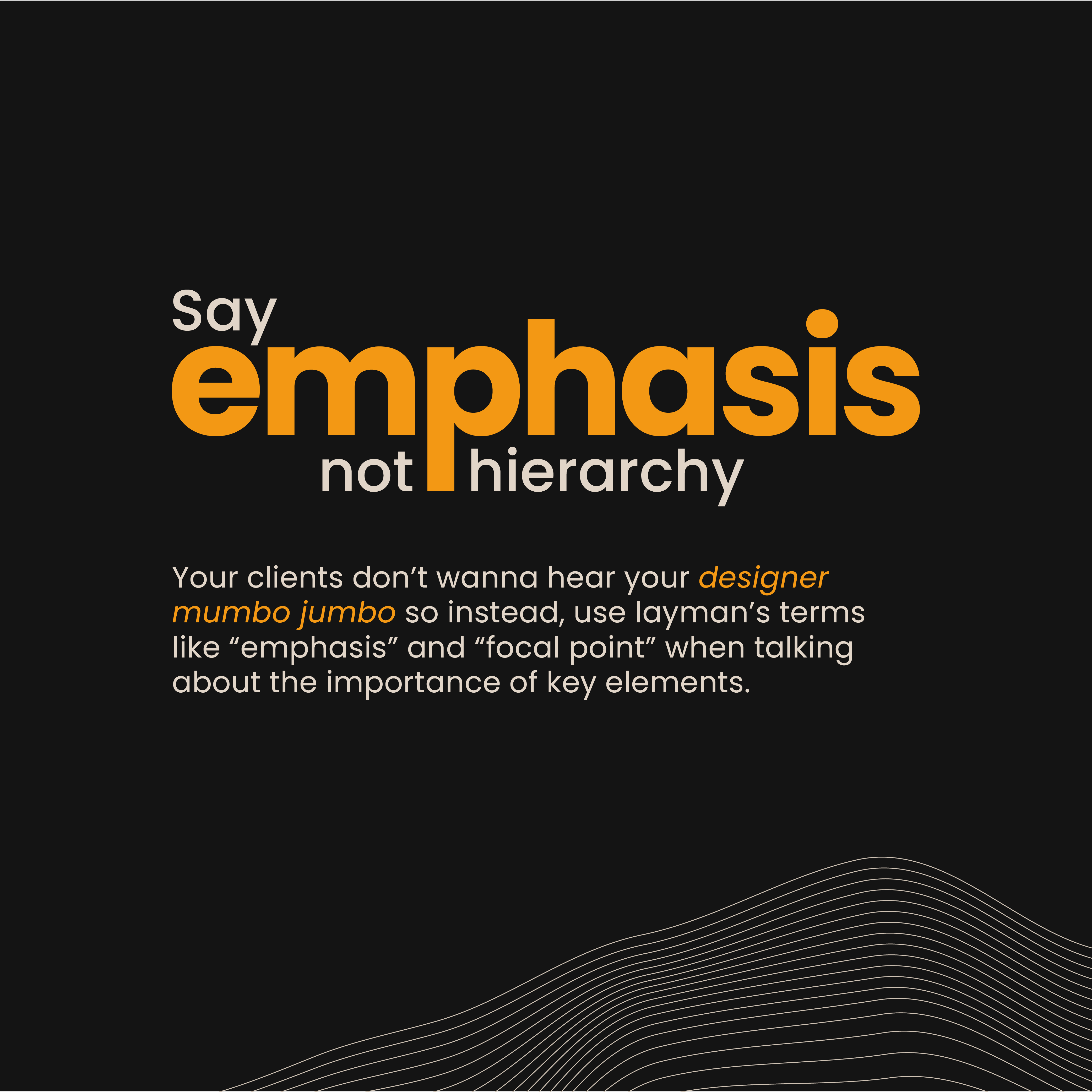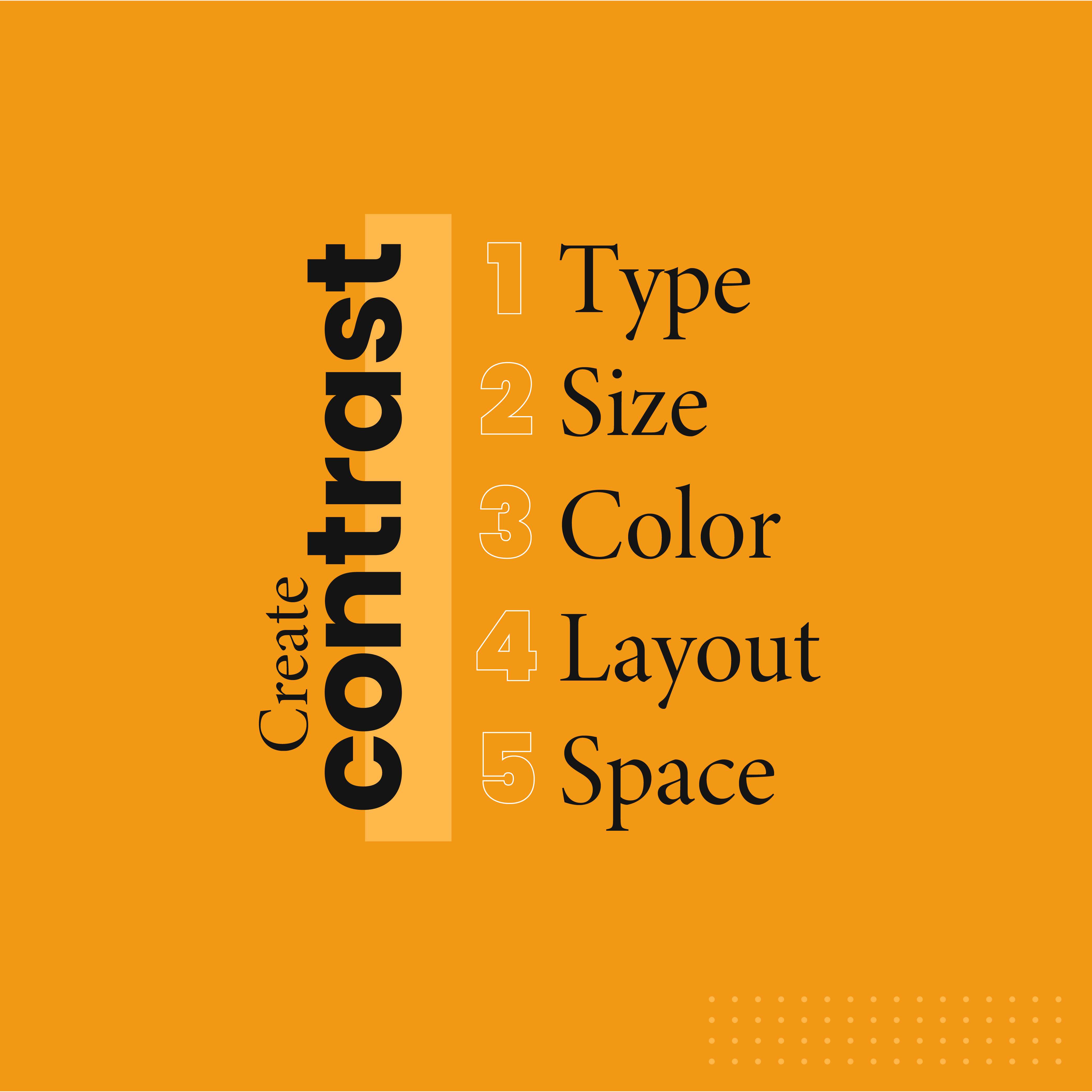
Seeking Graphic Design Talent
CONNECTIVE Agency is an integrated marketing and communications agency based in Dallas, Texas. We get to work with local, national, and international organizations. Our clients are leaders in the education,…
Every piece of marketing collateral tells a story about your business. Graphic designers have the job of creating materials that don’t just look good, but also effectively communicate their key message to your audience.
Cruz Torres is one of CONNECTIVE’s senior graphic designers with a decade of experience combining creativity and strategy to design dynamic art for brands. We asked him to shed some light on how he and our team think through designing marketing materials and business communications by organizing different elements to communicate key messages. This organization is known in the design world as “information hierarchy,” and it describes the way information is distributed, displayed and emphasized within a given piece.
 Hierarchy is Life!
Hierarchy is Life!Hierarchy – often referred to as emphasis or creating focal points – is everything in design. “Hierarchy takes your viewers on a journey through content, so when I’m designing something, it’s the first thing I think of. It dictates the design,” Cruz says.
Creating a hierarchy by determining what needs to be emphasized, when the viewer should see it and where it should be placed in the piece informs the design and helps the artists work through the best way to present the information. When creating marketing and business materials, “it can’t just look pretty.” Every aspect of the design serves some sort of function and works together to communicate a key message. Every piece has something to say and effective graphic design means figuring out the best way to say it.
There are a lot of factors working against marketers when creating materials – audiences are constantly inundated with content, so standing out can be difficult. Once marketers grab their audience’s attention, how do they work against short attention spans and keep them looking and reading? How do designers ensure they clearly convey the key points and message to the audience? According to Cruz, “there has to be some sort of manipulation” to effectively connect with and communicate with audiences. Creating focal points with hierarchy helps do just that by guiding viewers where you want them to go.
Graphic designers aren’t working on these materials alone. Cruz emphasized the importance of collaborating with copywriters to design effective marketing collateral: “The relationship between the designers and writers is so important. We rely on their guidance, we want to know what’s in their heads.” Because virtually all of the materials the graphic artists are designing are based on content written by the copywriters, working together effectively is essential to the creation process. There’s thought and intention behind every piece of copy and understanding that purpose is a vital component of the design process.
This collaboration can be as simple as copywriters providing context for the piece so the designer can take it from there, or working side-by-side to determine the best way to say and show the key message.
Even beyond their work with copywriters, collaboration finds itself in every step of the design process. “I bounce ideas off different people. I want to hear feedback and ideas from a diverse group – the copywriters, other designers, account leads. Everyone brings a unique perspective,” Cruz says. He’s also sure to look outside of his team and stay up-to-date on the latest design and marketing trends, constantly asking himself, “What are other creatives doing?”

One of the biggest determining factors in design hierarchy is the medium in which the message is going to be delivered. The same information might be presented completely differently in a social media graphic than on a billboard, based on how long your audience has to take in the information and how they’ll interact with the message.
When designing a piece, there are five elements to create a visual hierarchy at a graphic designer’s disposal:
These elements work together to create hierarchy and, when used effectively, can create a functional and visually-appealing piece. Graphic designers develop a deep understanding of each of these five elements, learning their rules – and when to break those rules – and best practices.
More than just creating aesthetic pieces, the CONNECTIVE team understands the science behind good graphic design. We use that knowledge to create compelling, functional and dynamic materials that help our clients tell their stories. From brochures to website design, social media graphics to banners, our team has designed it all. Learn more about our design services and how we can help your brand engage audiences with visually interesting content.